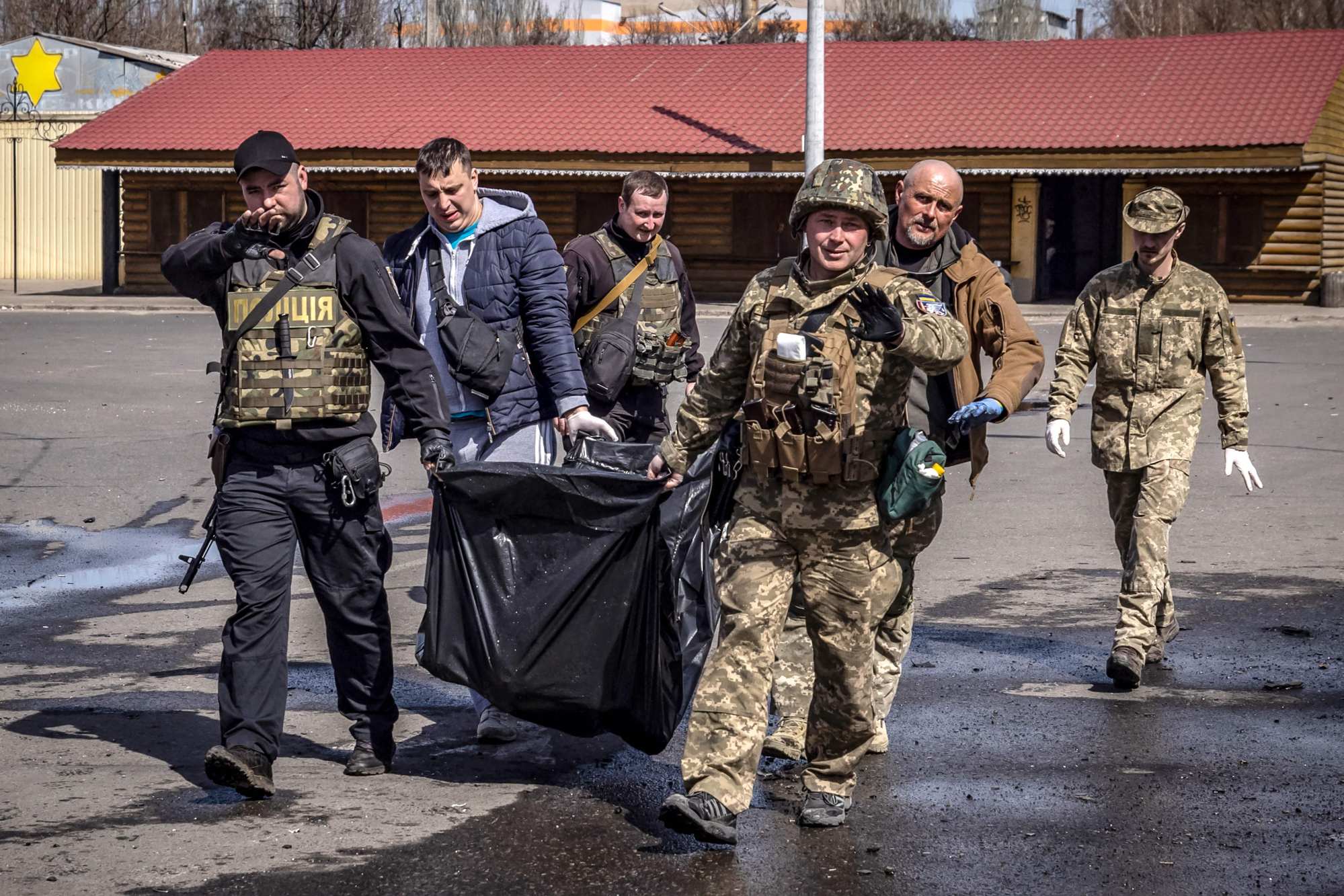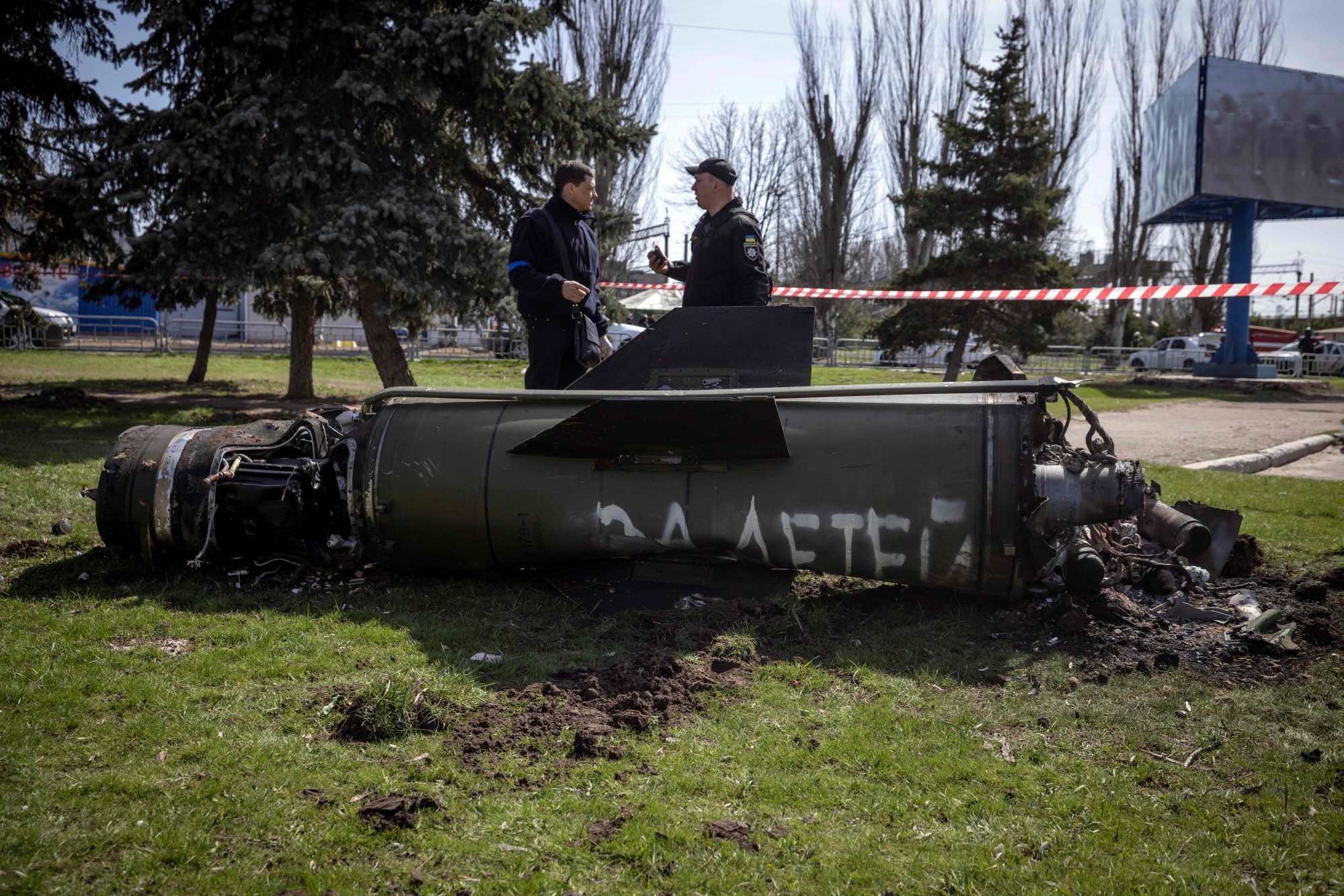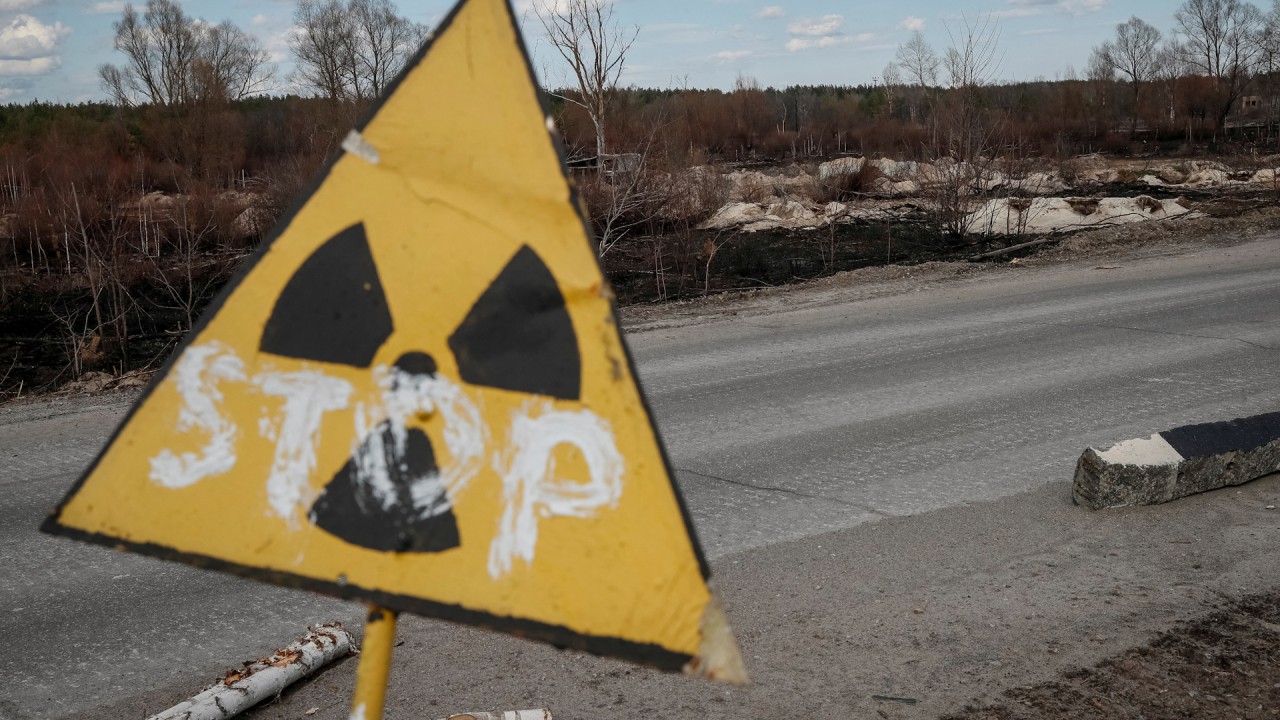
Ukraine war: Death toll rising on ‘horrifying’ Russian attack on railway station
- About 4,000 people, most of them elderly, women and children, were at the railway station when it was hit, mayor said
- ‘Horrifying to see Russia strike one of the main stations used by civilians evacuating the region where Moscow is stepping up its attack,’ EU chief said
Ukrainian officials are raising the death toll from a missile strike on a packed train station in the eastern city of Kramatorsk, as local hospitals buckled under an influx of injured victims.
An updated count showed 50 people were killed in Friday’s strike. Ukrainian officials had earlier put the figure at around 30. Officials put the number of injured up to as many as 300.
Kramatorsk Mayor Oleksandr Honcharenko told Ukrainian TV that between 30 and 40 surgeons were treating the wounded, and hospitals were unable to cope with the surge in admissions.
Earlier on Friday, EU Council chief Charles Michel slammed Russia for the “horrifying” attack, saying Moscow was cutting off an escape route for civilians.
“Horrifying to see Russia strike one of the main stations used by civilians evacuating the region where Russia is stepping up its attack,” Michel said on Twitter. “I strongly condemn this morning’s indiscriminate attack … by Russia”, EU foreign policy Josep Borrell said in a separate tweet.
Journalists on the scene saw at least 20 bodies of people grouped and lying under plastic sheets next to the station. Blood was pooling on the ground and packed bags were strewn outside the building in the immediate aftermath of the attack. A rescue worker said the station was being used for civilian evacuations.
About 4,000 people, most of them elderly, women and children, were at the railway station when it was hit, Honcharenko said.
The remains of a large rocket with the words “for our children” in Russian were lying near the main building. Bodies were later seen being loaded onto a military truck.
Kramatorsk was hit by Russian strikes earlier this week but had otherwise largely been spared the destruction witnessed by other east Ukraine cities since Russia’s invasion. Ukrainian authorities warned residents in the east of the country to flee westwards immediately in advance of an anticipated Russian attack.

As Russia refocuses its invasion of Ukraine on the east, recognition is growing in Kyiv and allied capitals that the window to prevent the nation’s partition and a long war of attrition may be narrow.
The recent withdrawal of Russian troops from around Kyiv represents a defeat, after Ukraine’s military stalled their advance with a combination of urban warfare and attacks on supply lines.
Yet to roll back, or even contain a grinding advance by reinforced Russian units across the eastern Donetsk and Luhansk regions would mean taking the fight to open battlefields, requiring more than just the light anti-tank and anti-aircraft missiles the US and Europe have supplied so far.
“Planes, shore-to-vessel missiles, personnel armoured vehicles, heavy air-defence systems,” Ukraine’s Foreign Minister Dmytro Kuleba said before meeting with North Atlantic Treaty Organisation counterparts in Brussels on Thursday, when asked what he was requesting.
He predicted that the coming battle for the east would be reminiscent of World War II, involving large-scale operations and thousands of tanks and artillery pieces.
“Either you help us now – and I’m speaking about days not weeks – or your help will come too late and many people will die,” Kuleba said. He did not doubt Ukraine would receive the arms it needs, he said, but “the question is the timeline.”
Six weeks after Russian President Vladimir Putin launched his invasion of neighbouring Ukraine, the war is entering a new phase, one that may allow Ukraine just weeks to procure and deploy those weapons.

That’s how long it’s likely to take Russia to reconstitute units for a major assault in the east, adding what areas of the Donbas region remain in Ukrainian hands to a swathe of territory it already holds. With that achieved, Russian forces could dig in for a long and destabilising war to force an eventual settlement, imposing a heavy toll on Ukraine, as well as steep costs for Europe’s economy and for Russia itself.
“Allies should do more and are ready to do more to provide more equipment, and they realise and recognise the urgency,” Nato Secretary General Jens Stoltenberg said after Thursday’s meeting. “This war may last for weeks, but also months and possibly also for years.”
Sanctions have had no discernible impact on Putin’s invasion plans to date, so the focus is growing on weapons capable of evening the balance on the ground in what UK Armed Forces Minister James Heappey described in a statement Thursday as “this next phase of the conflict.”
The quantities of heavy weaponry offered by Ukraine’s allies are for now small and some equipment takes months of training to operate. Whether enough can be deployed to the Donbas front in time to take on the expected Russian onslaught is unclear. High intensity conflict runs through ammunition and equipment fast, and Ukraine’s forces will face their own logistical challenges as Russia targets fuel and munitions depots in long range missile strikes.
To succeed, Ukraine will need not just tanks, but also good intelligence, more of the advanced light weaponry it has used to such effect and ample territorial forces to prevent the encirclement from behind of their front line forces, Mark Hertling, a former commander of the US Army in Europe, said in a Twitter thread.
“Donbas will be a battle of attrition,” he said.

Financial and moral support
The European Commission chief and the EU’s top diplomat will meet Ukrainian President Volodymyr Zelensky in Kyiv on Friday to offer financial and moral support in a capital gradually reawakening after Russian forces withdrew from its outskirts.
Josep Borrell told reporters the visit was a signal that “Ukraine is in control of its territory” and the government was still in charge.
“Ukraine is not a country invaded, dominated. There is still a government (which) receives people from outside and you can travel to Kyiv,” Borrell said, adding he hoped the EU would offer another 500 million euros (US$543.25 million) to Kyiv in the coming days.
Zelensky has urged Brussels to do more to punish Russia, including banning purchases of oil and gas from the country, and has called on the EU to accept Ukraine as a full member.
The European Union on Friday formally adopted its fifth package of sanctions against Russia, including bans on the import of coal, wood, chemicals and other products.
The measures also prevent many Russian vessels and trucks from accessing the EU, further crippling trade, and will ban all transactions with four Russian banks, including VTB.
The ban on coal imports will be fully effective from the second week of August. No new contracts can be signed from Friday, when sanctions are to be published in the EU’s official journal. Existing contracts will have to be terminated by the second week of August, meaning that Russia can continue to receive payments from the EU on coal exports until then.
“These latest sanctions were adopted following the atrocities committed by Russian armed forces in Bucha and other places under Russian occupation,” Josep Borrell, said.
In addition to coal, the new EU sanctions ban imports from Russia of many other commodities and products, including wood, cement, fertilisers, seafood and liquor, for a total value estimated in 5.5 billion euros (US$5.9 billion) a year.
The EU also restricted export to Russia of a number of products, including jet fuel, quantum computers, advanced semiconductors, high-end electronics, software, sensitive machinery and transport equipment, for a total value of 10 billion euros a year.



.png?itok=arIb17P0)

